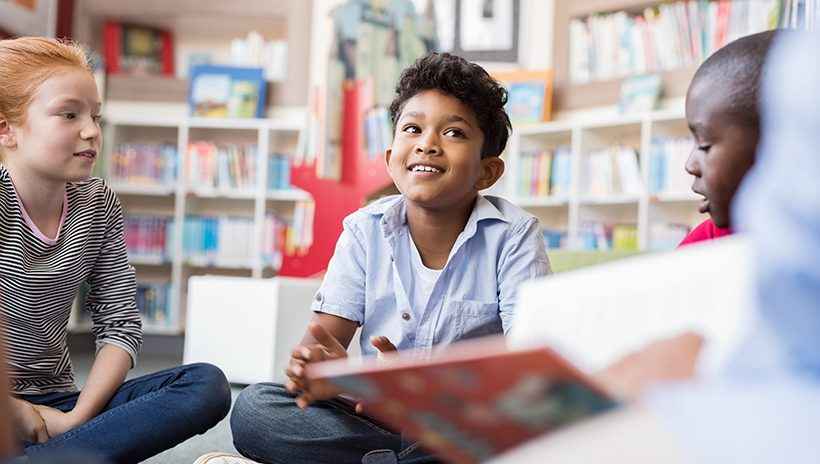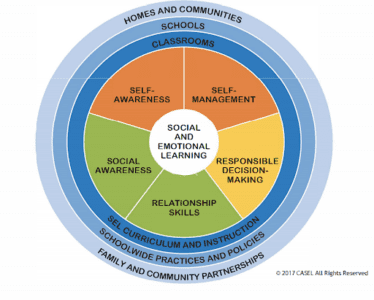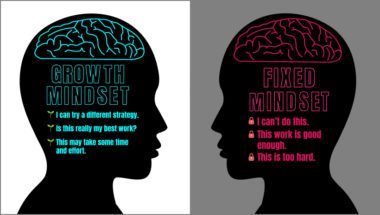Welcome to the second blog post of our six-part blog/webinar series on Social and Emotional Learning (SEL) for grades K–12. We’ll guide you through the “what, where, when, why and how” of the SEL competency: Self-Awareness. We’ll also be sharing real-life examples and engaging strategies to be used in the classroom and on-line. But first, some words of wisdom:

OK, it’s not exactly Socrates, but you get the point. Before we begin, let’s remind ourselves of Social and Emotional Learning’s (SEL) five core competencies:
What Is Self-Awareness?
As we’ve said before, we can’t teach beyond where we have gone ourselves. For that reason, cultivating self-awareness is as beneficial for YOU as it is for your students. The fact is: the more self-aware an educator is, the more capable they are of creating high quality social emotional learning environments.
| Competency | Skills We Need Now |
| SELF-AWARENESS: The ability to accurately recognize one’s own emotions, thoughts, and values and how they influence behavior; and accurately assess one’s strengths and limitations, with a well-grounded sense of confidence, optimism, and a “growth mindset.” | As we process the current pandemic and racial injustices, self-awareness is critical to identifying and processing our complex emotions when things are uncertain and socially turbulent, reflecting on our strengths; understanding our cultural, racial and social identities; and examining our implicit biases. |
* CASEL, 2020
Let’s take a closer look at the components of self-awareness.
Recognizing One’s Emotions
This one goes out to our English teachers. (We know how much you love Greek and Latin roots.) The word emotion comes from the Latin “e” meaning “out” and “movere” meaning “to move.” Emotions are meant to move through us. Babies are a great example of emotional health in that they let their emotions come and go; they pass through them like weather.
It is not until later in life that we learn to hold on to, hide or suppress our emotions. The reality is that emotions are neither good nor bad. Emotions are vital pieces of information. However, the vast majority of us were never taught how to recognize our emotions or to consider the important messages they carry. With time and practice, we can get better at knowing what we are feeling and why. This awareness helps us to evaluate our response so that we can control our emotions rather than let them control us. We see students regularly getting swept away in a whirlwind of their emotion, especially during puberty. As a teacher, I regularly remind myself of the following quote:
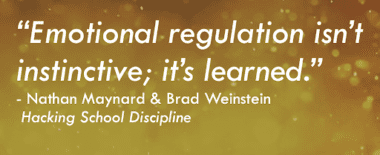
Unfortunately, there are many classroom management systems that disregard or disapprove of emotion, offering only punitive measures rather than the necessary guidance needed to resolve the situation. When a child is being criticized for expressing their emotions (crying, yelling, etc.), it can lead to an even more intense demonstration of that emotion. (Maynard & Weinstein, 2019). In those moments, having the right vocabulary allows us to see the real issue at hand.
In SEL, we prioritize responding over reacting. By labeling an emotion, we can create distance between ourselves and our experience that allows us to choose how we respond to challenges. Based on new research using Magnetic Resonance Imaging (MRI), we now know that the simple act of labeling an emotion makes it less intense. (Hammond, 2015). Give it a try.
Assessing One’s Strengths and Limitations
Before we ask students to assess their strengths and limitations, let’s do a quick self-awareness exercise ourselves.
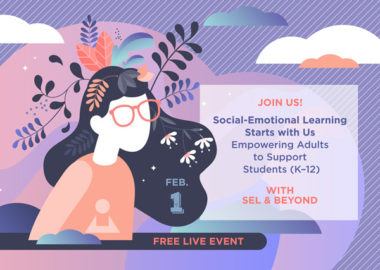 Quick Personal Inventory
Quick Personal Inventory
- In what ways do you solicit feedback from your students?
- What student behaviors elicit an emotional reaction from you?
- How do you provide specific and meaningful feedback to students?
- What are your strengths?
- What are your areas of growth?
As educators, our students are extremely valuable assets in helping us cultivate more self-awareness. I had been teaching for 7 years before I ever solicited feedback from my students. This is what I asked:
Quick Student Feedback
- What does your teacher do that helps you learn?
- What does your teacher do that makes it hard for you to learn?
- What do you want to do more of in class?
- What do you want to do less of in class?
- Is there anything else you would like your teacher to know?
And here were some of my answers:
“I like it when you show pictures and videos and tell jokes. Sometimes it’s hard for me to understand when you talk too fast. I would like to do more activities where we work with partners and listen to music. I don’t like listening to the teacher for a long time without a break. I want you to know that sometimes I don’t finish my homework because I am up late helping my mom.”
Self-Awareness Alert!
Like me, you will probably get some constructive (and even negative) feedback and that’s OK! Just be aware that your first reaction to criticism will probably be defensiveness, which is completely natural. Then remind yourself of the importance of the work you do and remember that this exercise will improve outcomes for everyone in your class, including you. Your students receive feedback all day long; it can be very empowering to give them the opportunity to share their input!
I personally found exit tickets to be a fun, fast and enlightening way to solicit feedback. Here are a few student responses:

“What I liked about this lesson is we got to move and talk and listen to music. I want to do more activities like this.”
Now that we have this important student feedback, we can tailor our instruction around what works for students. This simple activity, that can be done in classrooms or on-line, helps our students to feel valued which in turn strengthens our relationships with them.
Having a Growth Mindset
The concept of a growth mindset was developed by psychologist Carol Dweck and popularized in her book, Mindset: The New Psychology of Success. In recent years, many schools and educators have started using Dweck’s theories to inform how they teach students.
Dweck focuses on the difference between “fixed” and “growth” mindsets. In a fixed mindset, people believe their basic qualities, like their intelligence or talent, are simply fixed traits. Whereas in a growth mindset, people believe that their most basic abilities can be developed through dedication and hard work. If you have a growth mindset, Dweck shares that it “creates a love of learning and a resilience that is essential for great accomplishment.” Yes, please! I’ll take one of those.
Let’s Reflect: Do you currently have a growth or a fixed mindset?
What makes the “growth mindset” so profound is that it creates a passion for learning. Having a growth mindset means that human qualities like intelligence and creativity, and even relational capacities like love and friendship, can be cultivated through effort and deliberate practice. Not only are people with this mindset not discouraged by failure, but they don’t actually see themselves as failing in those situations—they see themselves as learning.
“Mistakes grow our brains!”—a fifth grader after learning about growth mindset
So, just to be clear—you will not become an SEL expert overnight, and no one expects that of you! But, we do encourage you to have a growth mindset when learning about the SEL competencies and experimenting with these new strategies.
Check out these Growth Mindset Videos for Kids.
Check out these Growth Mindset Read Alouds.
WHY?
Becoming more self-aware helps us to manage our thoughts, emotions, and behaviors, rather than allowing them to manage us. The more self-aware we are, the better able we are to feel hurt without spreading hurt. Having a growth mindset and learning from our mistakes enables us to get one step closer to achieving our goals. Understanding our cultural, racial, and social identities helps us to understand ourselves and the impact we have on the world around us. Intentionally working to become more self-aware helps us to show up in the classroom (and the world) as the best versions of ourselves.
Additional benefits include:
- Better relationships
- Better decision making
- More effective communication
- Increased productivity
- Improved classroom performance (especially those with learning and attention issues)
- Greater preparation for a variety of careers in the “real world”
Wouldn’t a dose of self-awareness make a family holiday dinner better for most of us? We agree. So why isn’t everyone running out to become self-awareness experts? Good question. Because self-awareness is an “inside job”, and it requires a fair amount of self-exploration—which can be a bit uncomfortable at times. Up until now, many of us simply haven’t had the support to develop and practice the skill.
WHERE AND WHEN?
SEL can take place everywhere: school, online, and at home! At school, educators can embed SEL into academic content and instructional practices or teach SEL as a stand-alone lesson. SEL can also be developed through social experiences at recess, lunch, in the hallway and after-school programs.
Check out this video that highlights how a student’s interactions with adults can affect their education and overall sense of well-being.
HOW?
First and foremost, remember that the SEL journey begins with you!
The good news is you don’t have to do it alone. Talk with other educators about their experiences, tune-in to our webinar series where we walk through strategies, and start engaging in SEL conversations on social media. Seek out books, blogs and professional development opportunities that deal with SEL, Equity, and Cultural Responsiveness. We shared some links below to get you started.
In terms of your growing SEL strategies toolbox, here are a few self-awareness strategies that can be adapted for all grade levels. We encourage you to experience the strategies first before trying them with your students. We know your time is precious, which is why we included various opportunities for differentiation along with a step-by-step guide for implementation. As always, feel free to augment and modify these strategies to meet the needs of your students.
One of the first steps to becoming self-aware is being able to identify and understand our emotions. Students use scaffolded language and visuals to identify their emotions.
Support students to identify what they love and value. Create connections with classmates and teachers by sharing their finished project. This is a quick and easy way for students to feel seen and heard.
Support students in identifying important events in their lives. This allows students the opportunity to share their story.
Hear from a teacher about her favorite self-awareness strategy:
Thank you for reading. We would LOVE to see and share what you’ve experienced using the strategies. Tweet photos or stories @SELandBeyond.
Want more on SEL? Check out the next chapter in this series, SEL & Beyond: Self-Management.
Additional Resources:
USC Diversity ToolKit: A Guide to Discussing Identity, Power and Privilege
This toolkit is meant for anyone who feels there is a lack of productive discourse around issues of diversity and the role of identity in social relationships.
NEA Diversity Toolkit: Race and Ethnicity
Provides resource to help educators reflect on racial identity and also learn about the social construction of race and racism in the United States
Helping Students Discover Their Identity
In this lesson, students will describe aspects of their identities such as race, gender, ability, religion and more.
17 Self-Awareness Activities and Exercises for Adults
This blog post by Positive Psychology shares self-awareness activities, exercises and techniques.
10 Ways to Improve Your Self-Awareness
This blog post shares 10 simple and practical self-awareness activities.
Pinterest SEL
This board shares dozens of SEL activities, strategies and exercises curated by the authors.
See also:
Introduction to Social and Emotional Learning, the first chapter of this series.
The next chapters in this series:
- SEL & Beyond: Self-Management
- SEL & Beyond: Social Awareness
- SEL & Beyond: Relationship Skills
- SEL & Beyond: Responsible Decision-Making
SEL & Beyond: A Dynamic Introduction to Social and Emotional Learning and Its Core Competencies
Join SEL experts Trisha DiFazio and Allison Roeser for a free, 6-part SEL workshop!
Infobase’s SEL Packages for All Levels: Instant Trial Access
Access content supporting the five competencies of social and emotional learning.
About the Authors

Trisha DiFazio is an author, education consultant, and former adjunct professor in the Rossier School of Education at the University of Southern California (USC). She is passionate about empowering teachers and students around Social and Emotional Learning, Cultural Responsiveness, and Mindfulness.

Allison Roeser, Master of Health Science (MHS) and Professional Certified Coach (PCC), has almost two decades of experience working with leaders in education, child welfare, and social change. As an avid learner of mindfulness practices, Allison has seen firsthand the value of integrating self-awareness into professional and personal development.


